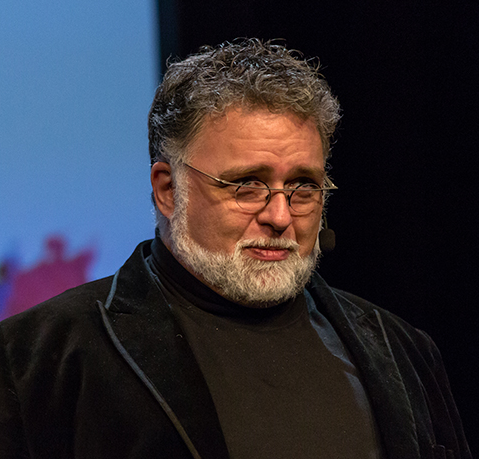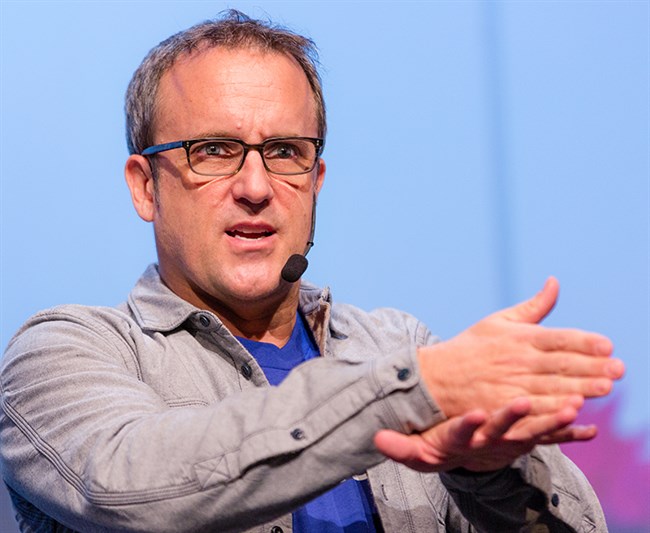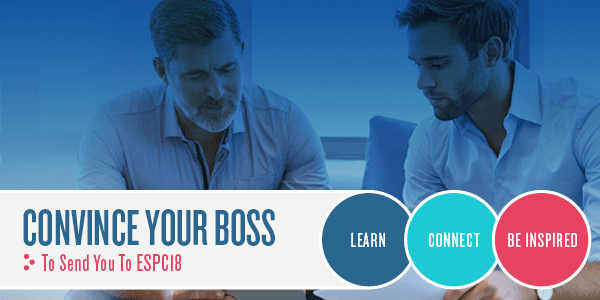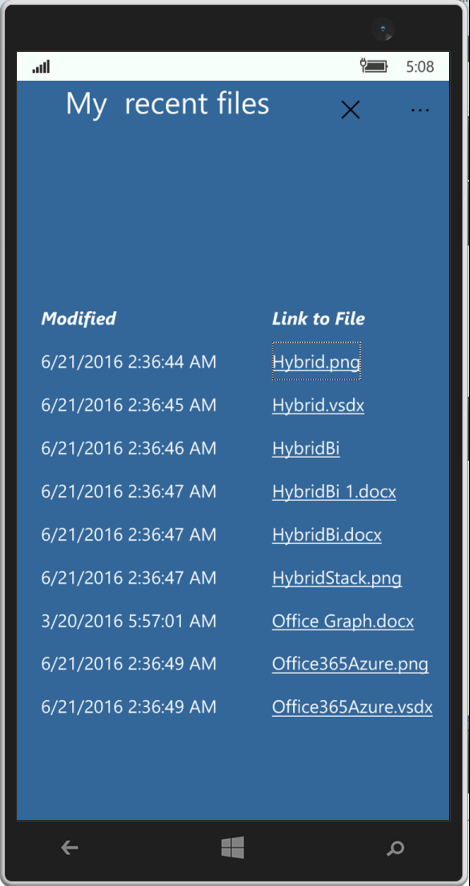On part 1, we reviewed the Keynotes on Day 1, which I thought were very good in setting the tone and getting the energy flowing. Seth Patton, Jeff Teper and Bill Baer from Microsoft presented Keynote #1 “The modern workplace” and Geoff Evelyn presented Keynote #2 “The Future is About Looking Back”. If you haven’t read it, check it here: My experience in Stockholm #ESPC15: Day 1 Keynotes.

In this second article, I will focus on the sessions and speakers that were most influential and insightful to me in the ESPC’15 in Stockholm. As everyone else, I had to make some tough choices choosing which sessions to attend, and it wouldn’t come as a surprise, given that I lead a SharePoint Development team, that my sessions were generally more focused on Development and Architecture.
I also attend a good few sessions on the Business track, and we will start with two speakers that are quite business focused: Mike Fitzmaurice (from Nintex) and Dan Holme (from IT Unity). We’ll then go into more technically focused sessions with Chris O’Brien (from Content and Code / Independent) and Radi Atanassov (from OneBit Software). To end, nothing like reviewing some of the insights I got from the MVP/MCM Panel session.

I attended 2 presentations from Mike Fitzmaurice (Nintex), both quite interesting. The first one was named “It’s not about SharePoint anymore!”. He started by reviewing why SharePoint had historically become a Swiss army knife, a tool for solving everything. And the reason was quite simple: to save on the cost for servers and maintenance. Companies wanted to take the most out of the servers they had available.

On the cloud? Doesn’t make sense anymore. Companies are no longer paying for servers online, nor do they have to maintain them. In fact, in his own words, the biggest “cloud disruption is shifting mind-set from servers to services”.
After that, he introduced a Swedish word that he feels sums up what people want these days: “Lagom”. It means “not too little, not too much, just right”. People want solutions that are pretty good and good enough for their needs. And today. Not in 6 months. This is in fact a simple yet powerful concept that people need to get into their DNA. It’s also not a new concept at all, after all, what is agile all about?
His next points were about using SharePoint as an integration platform, rather than a customization platform. And just Apps are not enough, APIs are what connects everything. The approach to do it, as outlined before, needs to be:Release. Revise. Repeat.It’s what he called a “LEGO style” approach.
Another important message was regarding competition: “The world is your oyster. Don’t ignore other solutions, it’s alright if people use them”. Couldn’t agree more. He also outlined the big shift in the commercial models: built solutions -> bought solutions -> rented solutions. Renting solutions gives you an unprecedented flexibility, so you should take advantage of it.

I also saw another presentation from Mike, “Real-World Lessons for Provider-Hosted Office 365 Apps Built on Azure”. Having the Nintex experience was obviously key here. Very interesting points raised.
An obvious one was to always let your customers/subscribers know what is changing, as early as possible, and listen to their feedback. Being obvious doesn’t mean it is always done. Consider Microsoft and SharePoint, as an example. Before Jeff Teper was back, there was a mistrust in the community and a feeling we weren’t being heard or informed. Didn’t it change for the better now?
He then went on into more technical / architectural advice:
- “Don’t do everything yourself, rely on other people’s technology”
- “The chances of you doing everything with 1 API? Very unlikely. Just accept it.”
- “You got to have retry mechanisms in your Apps, remote APIs and services do not guarantee they work 100% of the time”
- “How to figure out when to scale? Monitor all the time!“

On to Dan Holme, and his “Collaboration on the cloud” presentation. He had a very important message to start with: “IT only matters if it provides the business with increased value or decreased risk”. It’s easy for us geeks to focus on the technology bits and forget what IT is really about.
The cloud helps IT as it enables rapid adoption of new solutions and reduces the entry cost. MVP (Minimal Viable Product) is a key concept and approach that enables rapid innovation. It’s important though not to get discouraged with early releases (and MVP). It will not meet all your high expectations on release 1, but it will get better and better until it does.
- Skype for Business is good for instant, real time conversations and interactions.
- Groups is good for more structured, compliant and long lasting discussions, something a future new member will look at.
- Yammer is good for broad discussions that you don’t necessarily need to remember in the future.
- If proper IA needed, use a SharePoint team site. If only a container for docs, look at Group Files and OneDrive for Business.

I attended 2 presentations from Radi Atanassov, one was more technically focused and very specific (Azure AD Graph API), while the other was broader, about the Office 365 Patterns and Practices (PnP) group and Development in general.
If was quite funny to see his comments regarding the new ways of implementing SharePoint. “Like a stab in the heart”, when talking about the Microsoft guidelines on avoiding server side code and use SharePoint as a service. On another presentation, Rodrigo Pinto, one of the Portuguese representatives in the conference, shared the same opinion that the biggest challenge is to change your mind-set. “I’m still changing mine”, he said.
Specifically about the O365 PnP Core framework, I was surprise to see so many hands up in the air when Radi asked “How many have developed a provisioning framework for your team?”. I was part of them (shame! J). With the Core framework it is now possible to extract an existing site and redeploy it, it knows what is OOTB and just gets the changes. It seems to be way better than any other option before!

Chris O’Brien presentation was the Do’s and Don’ts for Office 365 development. One of the striking statements was: “SharePoint Add-Ins were really good 2/3 years ago, but now I’m thinking Office 365 Apps are better”. So, we’re still trying to convince a lot of customers that Apps (sorry, I meant Add-Ins) are the way to go, and it’s already deprecated? It seems so. The good news is, we are all getting used to a different pace of innovation, including customers (some of they are already evolving to actually expecting it), so this should be the new normal.
Some very interesting remarks about custom branding: If you and the customer understand the risks, just do it! A custom masterpage in Office 365 might not be so bad in certain scenarios. His example was a 50k user Intranet: what happens when they get an untested update? Should you not have a higher degree of control? That’s where a custom masterpage can help. Radi also shared the same opinion in his presentation.[P.S.: This is not a free get out of jail card if you’ve got a custom masterpage to include a JS file!]
My key takeaway from the various topics discussed was that you should consider Microsoft guidance carefully, but really think about what are your end goals and how to achieve them best.

And finally, the MVP/MCM Panel. The discussion was quite interesting, and in general reinforced what Microsoft and other community leaders have been sating. There were a few statements I took note of:
- “If your life was unpacking servers and installing software, your next 20 years will be hard.”
- “More than whether on-premises continues or not, the discussion is what workloads remain on-premises or go to the cloud.”
- No more Foundation version: “The answer is Office 365 – easy for small organizations.”
- “To keep up to speed with SharePoint and Office 365, you also need to keep up with the Azure offering.”
They also mentioned how Microsoft was wrong in their messaging around SharePoint and Office 365 for a while, causing confusion and uncertainty in the enterprise. And that there is still a lot of work to make the management of update roll-outs more controlled and also, a key point, providing solutions at the same time as when a feature gets deprecated, something that is still not done as well as it should be. But the future looks bright and a lot was mentioned on Azure and how important it will be to expand the offerings and also as the glue between them. I look forward to see what’s in store!
I hope you’ve enjoyed this article about my experience in the ESPC’15, I really enjoyed the conference and I hope some of my learnings will also be useful to you. And…I hope to see you in November for another round of awesomeness, this time in Vienna!
Similar Articles which may interest you:
-
My experience in Stockholm #ESPC15: Day 1 Keynote
-
10 Reasons to Attend the European SharePoint Conference 2016
-
ESPC15 Part 1 : Keynote & 2016 Roadmap…
-
The 2015 European SharePoint & Office 365 Community Award Winners
About the Author 
Alexandre has been working in the IT Consulting industry since 2007, mostly with Microsoft and Web technologies. SharePoint has been his main focus so far and he has become an enthusiastic supporter. Alexandre is currently head of SharePoint Development for Storm Technology.
To learn more about Storm Technology please click here.









